Life with a Diesel Heater
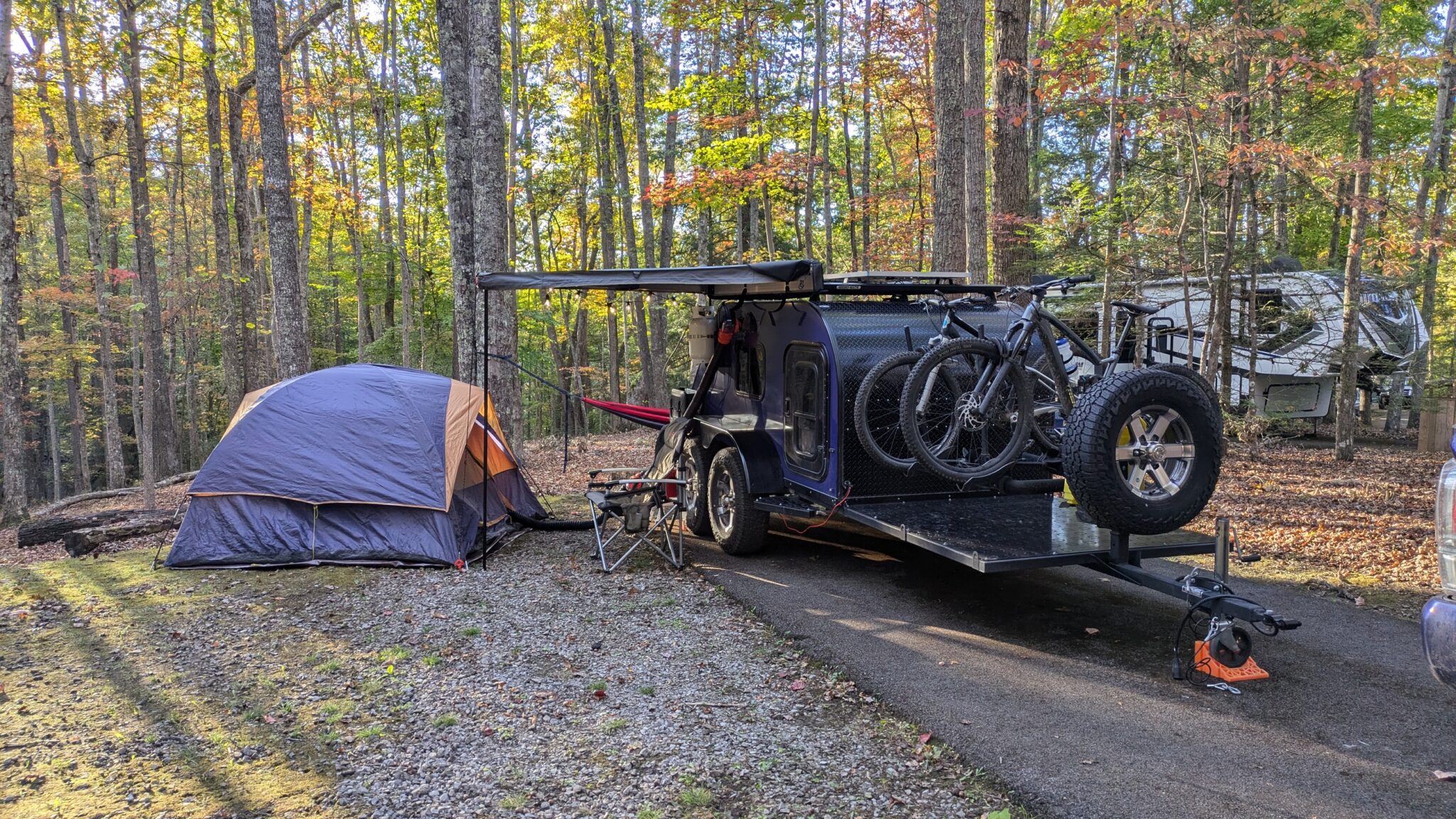
After years of using different heating methods from electric to propane to wood, none of them offered the flexibility I needed with my new teardrop trailer. The trailer is very well insulated, has a dedicated diesel heater port, and has several exhaust fans to pull the heat through the trailer. I often have a secondary tent to heat, so that makes heating options much more limited.
The key attributes I was looking for from a heater were the following:
- Could be run from a reasonably sized 12v DC power source, AC not needed
- Adequate heat to keep temperatures in my teardrop above freezing, and ideally heat a secondary tent as well.
- Little to no condensation buildup
- Easy to obtain and transport fuel
A diesel heater meets all the above criteria and with cheap ones becoming more and more popular, there is hardly any downside to trying one out, so I did.
Just as a point of reference, my temperature target is around 50F in both the trailer and tent as I like sleeping in the cold and have adequate bedding for down to 10F in the event the heater were to stop in the middle of the night. Always be prepared for the heater to fail, any heater can and will do that at the worst possible time. Count on it.
Disclaimer: My simple disclaimer is this, I am by no means an expert, nor am I endorsing anything I write about here as safe or prudent. It is simply what I did and why I did it, and perhaps as a bonus it can help you as well. I won’t be linking all my information sources as you can easily verify the information via a web search or firsthand experience. The parts I link worked for me, maybe they will work for you as well, but there is no “right” answer and do your own research before buying or using anything I talk about.
How to Choose a Diesel Heater.
Truthfully, there is no guaranteed model with every one of these being made as cheaply as possible by low quality factories. However, the model I ended up choosing was the WIPRO 8kW 12v diesel heater.
I chose this model over the dozens of others based on the reasonably favorable reviews both on Amazon as well as from other campers. The downside folks reported most with this model aside from gross user incompetence was leaking fuel, was an easy fix with some new fuel lines and better clamps. And truthfully, when buying something of this nature made in China super cheap, it is just a prudent idea to pull it apart and make sure of its integrity before use. The instructions are meh, but again, that falls in my “gross user incompetence” category and can be dealt with.
Heater Modifications
There are a few simple modifications that may increase reliability, usability, or both. YouTube is your friend, the info on how to do all this is out there.
Replacement Fuel Lines: I simply ordered up the correct diameter, 3/16 in my case, polyurethane flexible fuel line. The standard “green” fuel line teds to turn into a gummy mess within a couple years, leading to fuel leaks and potential fires. Installation is straightforward if you are somewhat mechanically inclined.
Inline Fuel Filter: Just to add a degree of protection from contaminants and debris, I added an inline fuel filter with stainless screen inside the unit.
Integrated Stand: I like this modification as the stand simply bolts to the feet of the heater after drilling two holes for the intake and exhaust. The heater now sits several inches off the ground, and the legs are adjustable to deal with uneven terrain.
The Bureck Thermostat
This one gets its own section. Controlling temperature remotely is a hot topic with diesel heaters. Most have a simple remote that tends to have limited range, functionality, and reliability. Replacing the control interface is something a lot of folks talk about, but it is extremely unit-dependent and difficult to get to work with so many heater variations out there. Bluetooth connectivity can be difficult and is generally unreliable. Enter the Bureck CD Thermostat.
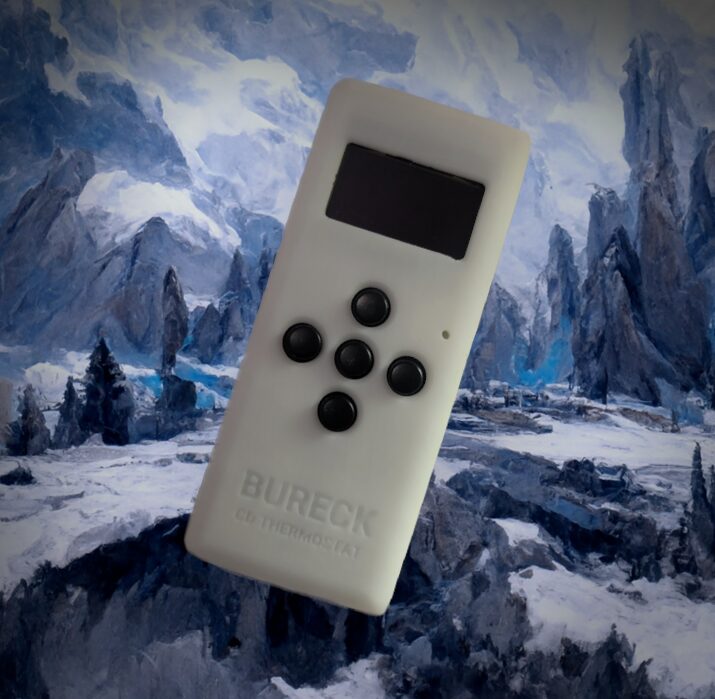
This little masterpiece mimics the cheap RF remote that almost every single diesel heater has, then adds a ton of functionality. The best part is, the heater only ever sees an on or off signal, and all the features are handled withing the remote, which also has a great little screen and interface. I won’t get into all it can do, which is a ton, but at a minimum it acts as a great thermostat which can reliably control your heat.
Kerosene over Diesel Fuel
This may seem an odd topic when talking about diesel heaters but hear me out. I run 1-K Heater Fuel in my diesel heater. While K1 (low sulfur) kerosene has about 4% less BTU/gallon, the benefits for this application far outweigh the reduced energy efficiency.
Cleaner Burn: Kerosene produces less carbon buildup in the combustion chamber which is especially important during minimum-load extended use
Less Emissions: Essentially less odor
Lower Freezing Point: With a freezing point of -40F, gelling is far less of an issue with kerosene than with diesel
A potential downside to running particularly K1 Kerosene is that due to much lower sulfur level and lack of detergents, the fuel pump may wear out sooner than if I ran on diesel. So be it. The positives far outweigh this potential issue in my opinion, a replacement fuel pump can be had for less than $30, and it’s an easy switch out. The 1-K Heater Fuel I use is readily available at Lowes, Home Depot, and similar stores. It also has great packaging, is easy to pour, and doesn’t make a huge mess.
Electrical Hookup
Electrically speaking, I kept it simple. My teardrop has about 320w of solar and a 150Ah lithium-iron battery so there is plenty of power available. It also has an external SAE connector with an inline fuse, so I simply wired an SAE lead that runs to the diesel heater SAE pigtail connector. I leave the heater side installed so all I must do is plug in the cable at both ends and I am up-and-running. Adequately sized cables, fittings, fuses, etc. should be determined based on your actual use case.
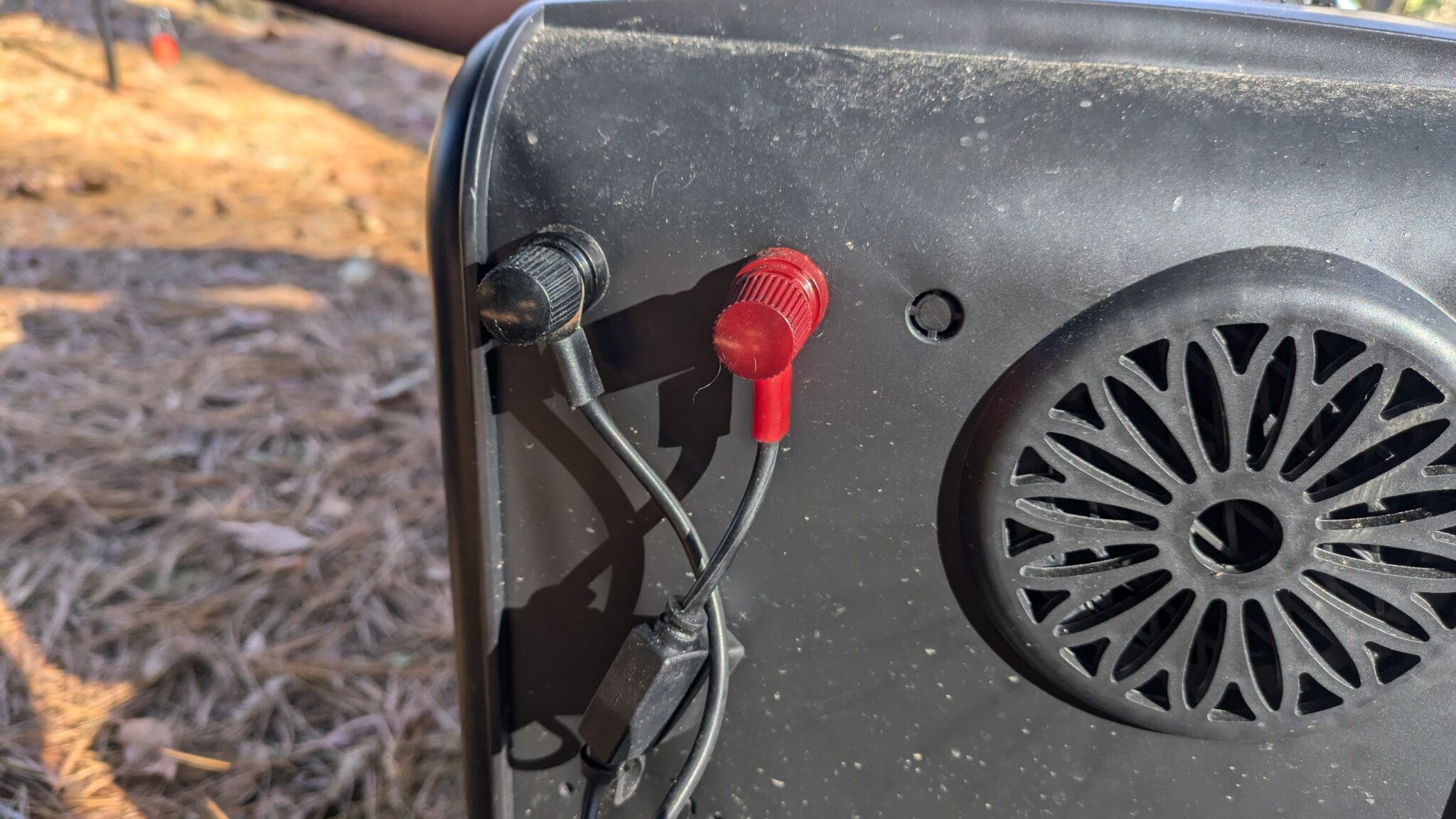
Heat Distribution
The flexible tubes that come with these can be a real pain to connect, disconnect, and generally deal with. On top of that, tight bends in the tubing can cause a flow restriction and eventually trip the heater out on too high of a combustion chamber temperature. After much research, I went with the simplest setup I could find, Camco sewer hose and fittings.
What is Camco? These are locking fittings designed for ease of use and typically for RV gray and black water transfers. But, since they all lock in place, offer rigid fittings, and easily extend or collapse to the length you need, they are perfect as heater hoses. I added to this a 3” plastic “Y” fitting with adjustable dampers, simple 3” diameter silicone tubing for miscellaneous connections, and some simple twist clamps which I really appreciate when it’s cold and dark.
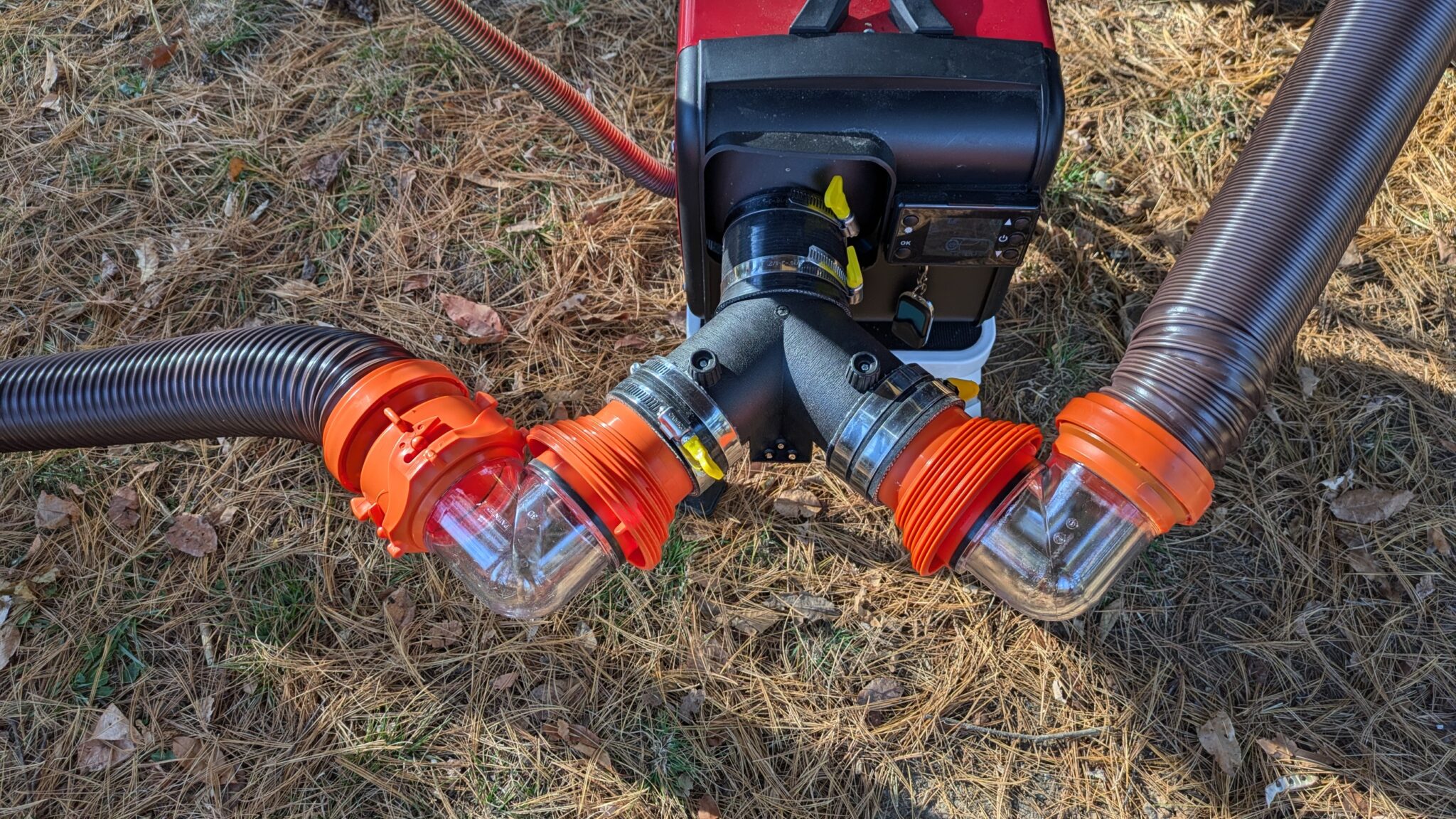
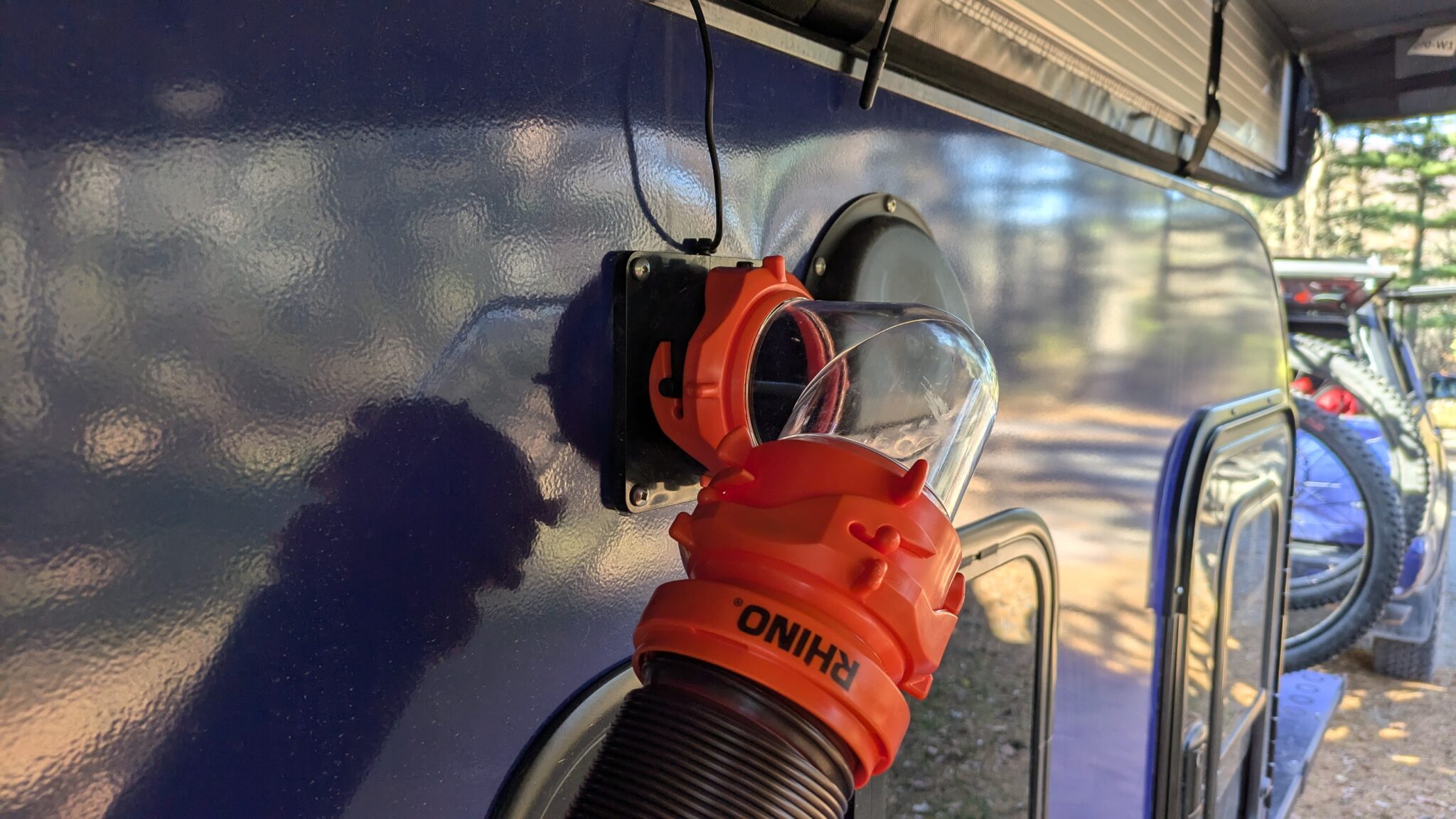
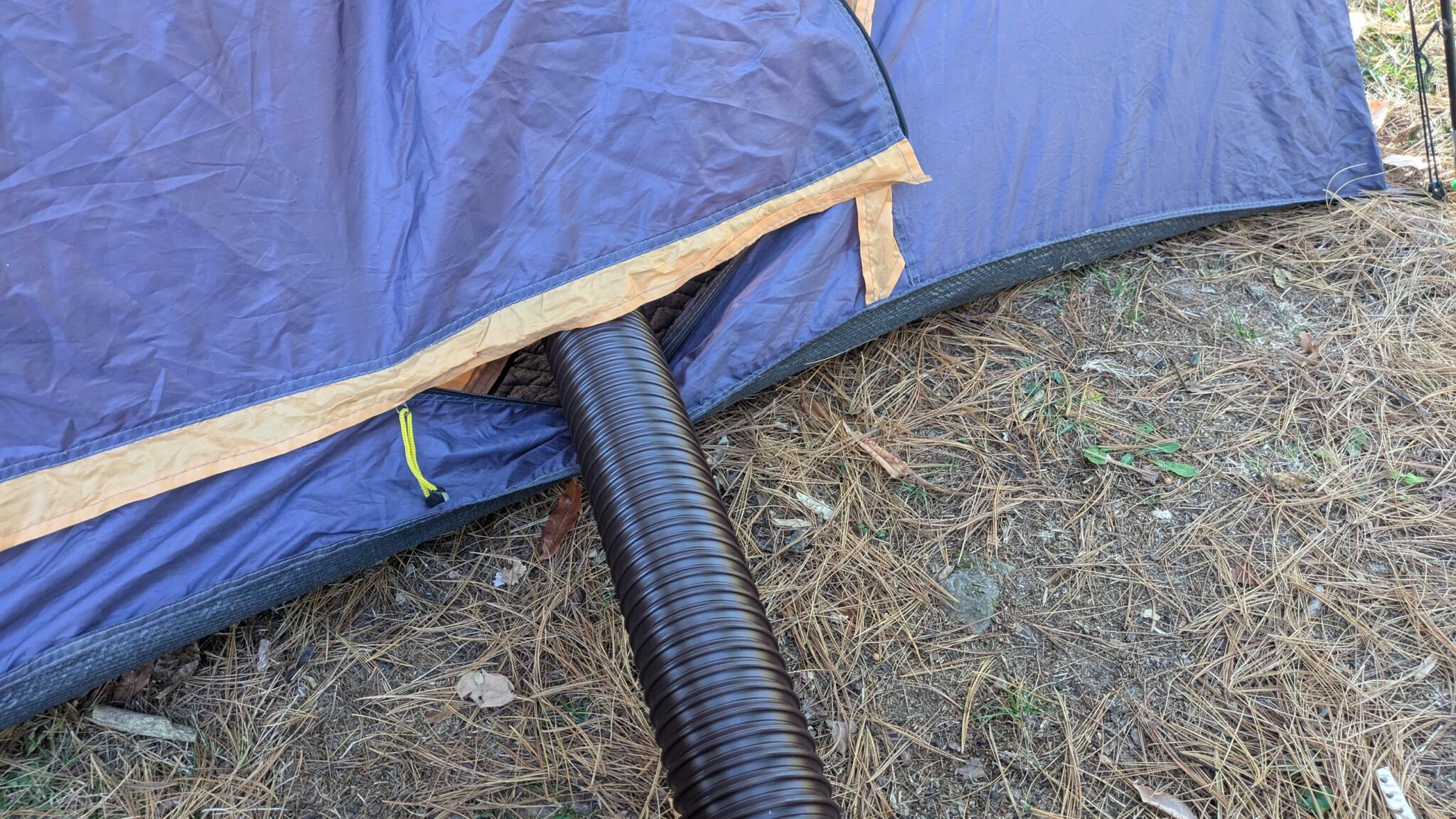
The following is my basic parts list, yours will likely vary but be relatively similar. I don’t make a dime from any of these links but be aware that many if not all of the parts I list can be obtained from most RV stores.
Hoses and Fittings
Camco 39774 RhinoFLEX 10’ Camper/RV Sewer Hose Extension
Camco 39770 RhinoFLEX 15’ Camper/RV Sewer Hose Kit with Clear Elbow 4-in-1 fitting
Fittings
Camco 39736 RhinoFLEX Clear Sewer Hose Elbow with 4-in-1 Adapter
Camco 39857 RhinoFLEX Clear 90 Degree Sewer Hose Swivel Fitting
Clamps
Camco 39553 RV Sewer Hose 3” Twist-It Clamps (I used 3x packs of 2)
Splitter
75mm Diesel Heater Duct Connector with Adjustable Valve
Coupler
3” ID Straight Silicone Hose Coupler (I used 2x of these, cut one into 2 short pieces)
In words, the layout is very simple and is as follows:
- Diesel Heater
- Silicone Fitting with 2 clamps
- Y-Fitting
- Each Side of the Y-Fitting has one of the Camco RhinoFLEX hoses attached with the 90-degree elbow and a short section of the silicone hose, attached with a clamp
- End 1 locks onto the trailer
- End 2 is run through the tent door
Operation of the Unit
Overall, my experience so far has been excellent. The unit has run reliably with no issues encountered. It is quiet compared to other diesel heaters I have heard, and the fuel consumption has been excellent.
With everything set up and in operation, it looks like this:
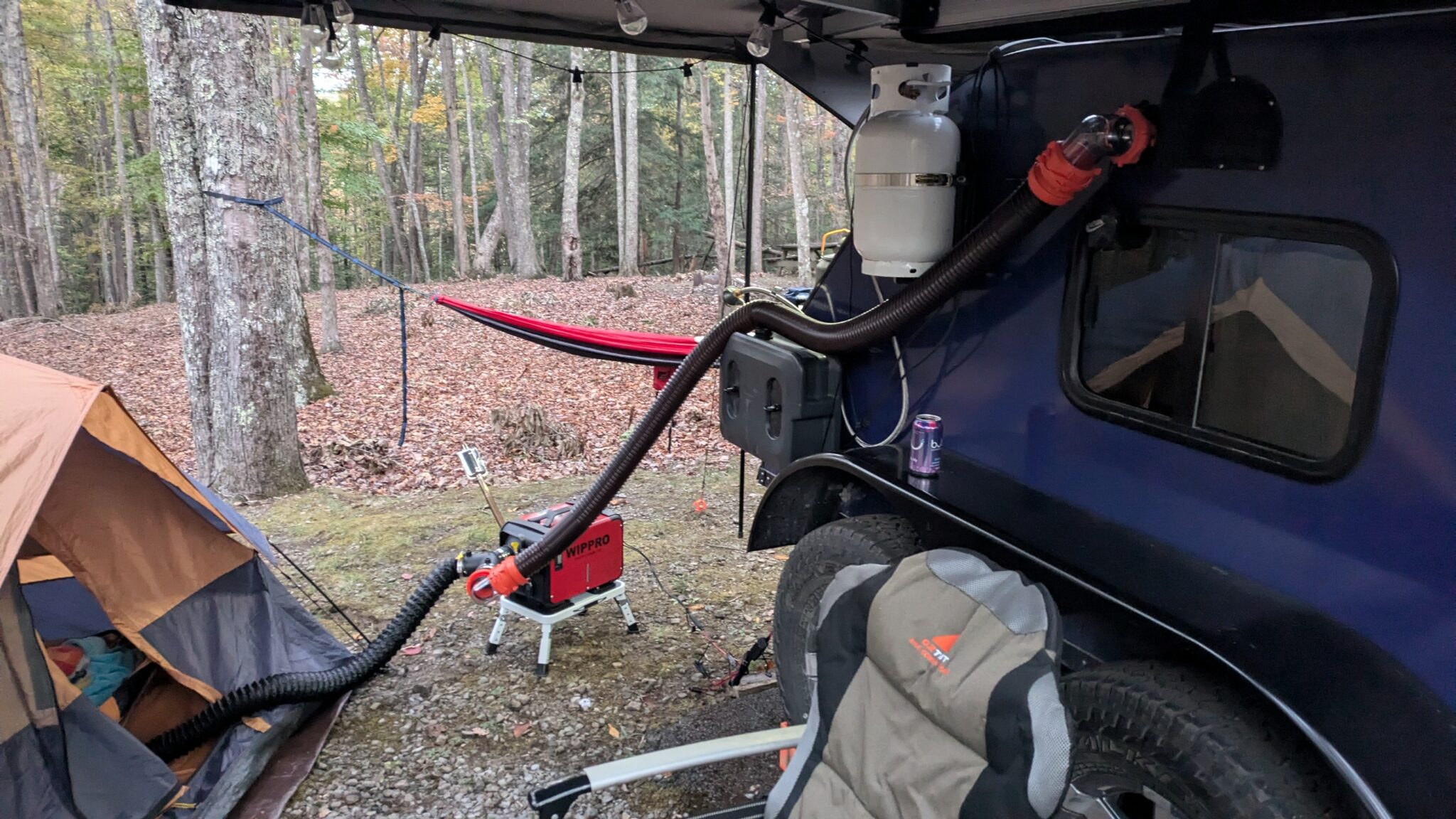
The diesel heater is wired into a fused lead of ample gauge, wired directly into the trailer electrical (320w max solar + 150Ah LiFePO4 battery). I use SAE plugs and pre-built connections for ease of use, and relative waterproofness.
Some specific areas folks might be interested in are as follows:
Heat Level
At the lowest level of heat output, feeding both the trailer and tent, outside temperature in the low 30’s, I still needed fresh air vents open to maintain the inside temp around 50F which was my target. While more heat will be needed as the outside temperature falls, I am confident that this solution will easily provide heat down to single-digit temperatures if not below. My battery is the limiting factor and if it stays above 4F it will provide power, and above 30F it will take a charge. Both are easy to maintain with this heater as the battery is on the wall between the galley and the bed area.
Power Draw
Around 100w when the glow plug is heating then less than 10w when the unit is in operation at its lowest setting. While I do have the option to run this via the thermostat, I chose to just set the heat to low and let it run continuously. The biggest factor here is that when the unit cycles, it may require the glow plug to heat up, and the subsequent power draw is many times more than just letting it run continuously.
Fuel Usage
Unscientifically speaking, running the unit on its lowest setting, I get approximately 20 to 24 hrs minimum from a tank of fuel. I have gotten more on occasion. Based on that, expect that you can run two nights on a single tank and bring more fuel if you will be staying past that or intend to run a bunch of additional hours during the day.
Noise
Again, unscientifically speaking, I don’t think its loud. On the last trip we took, my 12 year old slept 6 feet from it in a tent and stated “It wasn’t loud and I slept fine.” There you have it, proof these things are at least tolerable! Lol Seriously though, some models are definitely louder than others and I chose this one specifically because folks felt it was on the quiet side with an updated fuel pump. Yes there is some wind noise, not optimal but that’s what I had to work with. Here is a video of the transition from startup to the lowest heat setting.
Conclusion
Diesel heaters aren’t going to be a good solution for everyone. However, with more and more folks having adequate power, storage, and the desire to adventure across all four seasons, they are something that should be considered. I have put together a reliable, convenient, and relatively cheap solution that fits my needs. Hopefully, this article will make the equipment more accessible to you as well and help you go enjoy the outdoors to its fullest!